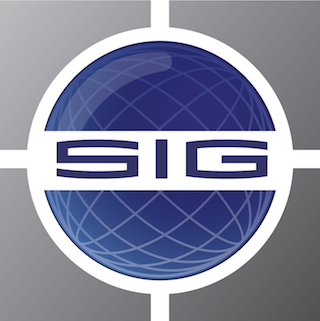US President Donald Trump’s visit to the Persian Gulf brought the region back into the American camp on artificial intelligence. The White House’s cancellation of the Biden administration’s AI-diffusion regulation was well timed: the message of both the trip and the cancellation was that this administration will not draw distinctions, as its predecessor did, in advancing what Commerce Secretary Howard Lutnick called “Trump’s vision for US AI dominance.” The US is, in a sense, trying to de-regulate AI politically. Washington’s move to block AI regulation by US states is also part of this. In SIG’s view, whether such de-regulation will achieve the goal of AI dominance is a different question.
As with crypto, the current administration’s US’s bias with AI is to let the chips fall where they may, so to speak, while also aggressively using the power of the state — as investor, as enforcer, as customer — to secure American advantages. Trump’s experiences of being deplatformed by Big Tech must have shaped his views: bitterness over the suppression of conservative speech, alongside the supposed promotion of anti-conservative speech, has been a dominant note since his second inauguration. In this scenario, technology and tech innovation were shown not to be autonomous forces, proceeding according to their own logic, perhaps capable of being channeled but not of being controlled. Rather they were the effects of companies run by individuals who could be influenced. That was well within the comfort zone of a lifelong businessman. (See the tariff retaliation against Apple for relocating its China production in India rather than the US.) It is a pro-market perspective in a way, but with the market understood as a place for ruthless competition among a small number of unconstrained players rather than as a mechanism for maximizing the efficient distribution of capital and labor.
Similarly, the role of the state in this perspective is to personify the nation in unconstrained and ruthless competition among states for, in U.S. Commerce Secretary Lutnick’s term, “dominance.” President Trump’s appetite for military confrontation in his first term was low, and that seems to be carrying into his second term. His appetite for economic confrontation was relatively high in term one and has gone to a new level in term two. The tools of the state are the weapons he has for such confrontation. They are directed toward securing dominance. Trump is personifying the powerful idea of economic nationalism.
The difficulty, with regard to “US AI dominance,” is that the AI sector is not like other industrial or commercial sectors. The preferred means for dominating AI has been the control of hardware, as in export controls on leading-edge chips or chip-design lithography equipment. Biden’s AI-diffusion regulations, like his CHIPS Act and much else, were about the geopolitics of hardware distribution. President Trump has opened that floodgate. But once the hardware starts flowing and the data centers are built the rest is software, the diffusion of which is extremely hard to control. Software can be stolen or replicated; more important, it can be developed independently, as DeepSeek has shown. The supply of chips and what is necessary to manufacture them can be choked off, up to a point. The supply of engineers and software-engineering skills really cannot. It will be diffused regardless of what the US or China want.
Among other things, this means US AI dominance depends on the strength and autonomy of US universities, the freedom to innovate in the US tech sector independent of political agendas, the smooth functioning of open global markets, sensible market pricing of resource inputs, the reduction of obstacles to the cross-border movement of labor … all of which run contrary to current US policy.
The Gulf states are investing in US AI infrastructure on the way to building their own systems, which will have the capacity to become independent of US systems (see SIGnal, “The America Stack,” Feb. 5, 2025). The emiratis are not happily volunteering to be hostages to US AI dominance. They are seizing the opportunity to gain access to the best technology that will enable them to maximize their own sovereignty while positioning themselves to be a sort of port for the storage, manipulation, and distribution of data, just as Dubai’s port operates with coffee, tea, and so much else.
The pattern is similar elsewhere, although no one can direct capital with quite the speed, and in quite the volume, that the Gulf states bring to bear. Malaysia hesitated for a moment at new deals for Chinese technology when Washington threatened retaliation against states using Huawei’s latest AI chips, but in the end, the shape of AI is not going to be determined by hardware. The massive computing power required to participate in the search for the grail of Artificial General Intelligence (AGI) is indeed a hardware question, but for sub-AGI artificial intelligence, which might well prove to be most if not all of AI, hardware is only one factor. The rest is software. And US dominance of it is unlikely to be secured using the current means.
